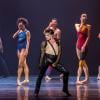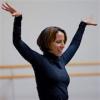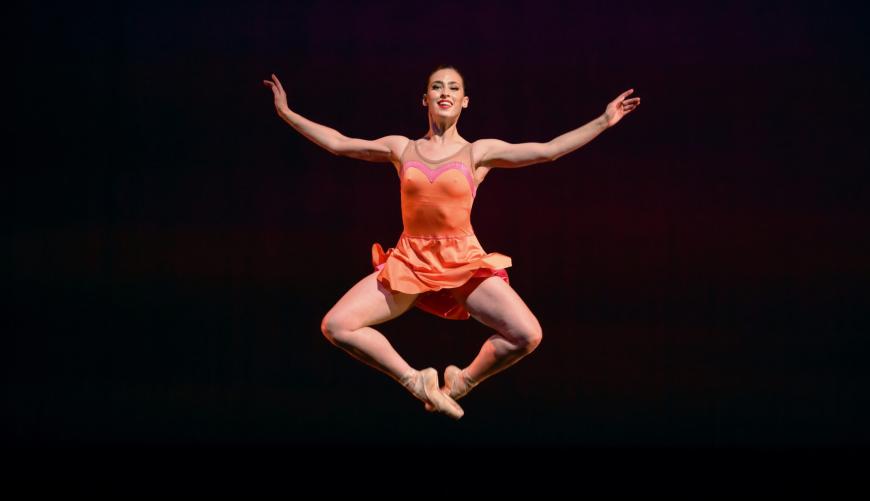
A showy show raised the curtain — imagine, a real curtain — on Smuin Contemporary Ballet’s return to live life, launching its Dance Series 1 in Mountain View last weekend and promising a full season to come. This program plays the next two weekends at the Cowell Theater in San Francisco — where Smuin, at age 29, now has a permanent home on Potrero Hill — followed by a weekend at Walnut Creek’s Lesher Center for the Arts.
The troupe’s “ta-ta to COVID” liftoff (though the audience still had to wear masks) in the compact and dance-dandy Mountain View Center for the Performing Arts was a three-way delight, beginning with the 2019 Take Five, choreographed by company alum Rex Wheeler, this year’s first runner-up, you should know, in RuPaul’s Drag Race. Set to a Dave Brubeck medley for the company of 16, garbed in every hue of the Popsicle rainbow, the work has wit, heart, charm, and precision horsepower to burn. (Notice I didn’t say anything about zooming, since we’ve had enough of that for a while.)
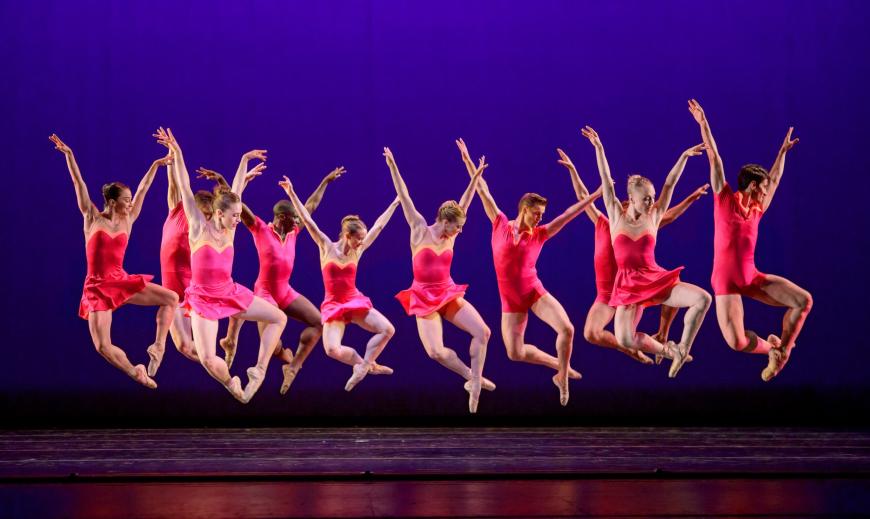
And speaking of horsepower, the ballet launches with a recorded Brubeck anecdote of life out West, where he grew up cowboying with his brothers, taking rides and jazz inspiration from the horses who clipped and clopped in ever-changing rhythms — and here Brubeck clapped samples. Wonderful. Artistic Director Celia Fushille told me the company, confined to virtual performances during the pandemic, nonetheless remained intact, and the benefits of that continuity were on full display at Sunday’s matinee.
Cassidy Isaacson and John Speed Orr set off the insouciant fireworks, leading the cast in the title tune; Terez Dean Orr joined her husband, João Sampaio, and Marc LaPierre in the sultry “Perfidia”; and Tess Lane and Mengjun Chen gave “Memories of You” a warmly nostalgic, closely partnered reading.
There was something for everyone. Next on the bill was Belgian-Colombian choreographer Annabelle Lopez Ochoa’s wildly imaginative and profoundly demanding Requiem for a Rose (2009), set to the Adagio from Schubert’s String Quintet in C Major.
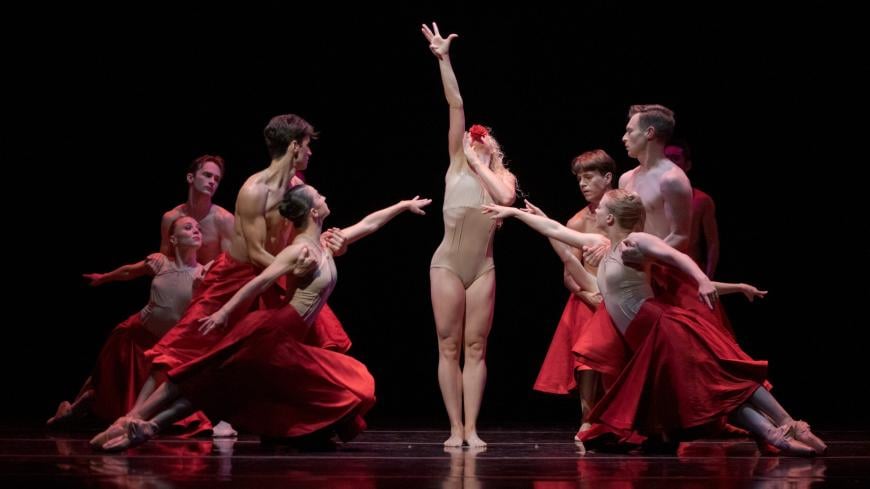
Opening with the stunning Tessa Barbour, spotlit in a white leotard with a red rose clamped between her front teeth, the piece gets even more gorgeous and more puzzling from there, as a unisex corps of 12 surrounds The Rose and lifts her, spins her, and turns her upside down. The corps spins in flaring red skirts, the men topless, the women in nude leotard tops. In swirls and in circles, they explore the ageless, conflicting questions, the unverifiable verities, of love and lust, joy and pain, the whole blasted thing. Plenty to chew on here, even if you don’t have a rose in your mouth, and Ochoa serves up a delicious, thought-provoking meal.
The long-delayed world premiere of Cuban choreographer and Malpaso Dance founder Osnel Delgado’s The Turntable, a gleam in his eye for some 10 years, showed that he’s full of ideas worth waiting for. It did set up some questions for this onlooker about why this work, with a premise and choreography at least as imaginative as Ochoa’s, didn’t have an equally profound impact.
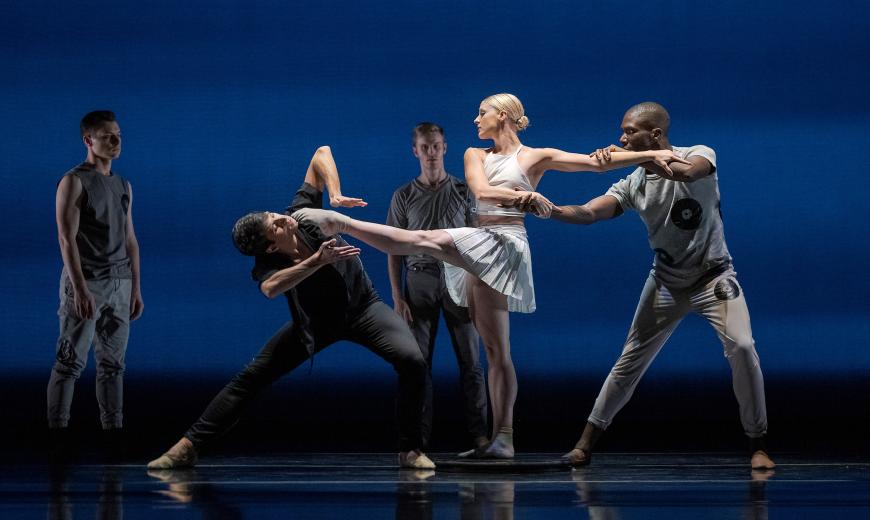
The Turntable spins out a fusillade of musical samples, from “Tashweesh” to “El Sinaloense” to “Wayne’s Thang,” to name but a few. The ballet revolves around a turntable — a small disc in the center of the floor that can turn a dancer who stands on it, creating a sense of randomness that’s of a piece with the popular Latin-inflected rhythms. The costumes, simple gray athleisure wear appliqued with notes and little phonograph records, show off the 16 dancers’ fluid rumbaing, mambo-manic, rippling, hip-switching delight in the music they’re finding whenever and wherever they move.
The dancers are sensual and playful, secretly strong and utterly fabulous. There’s great spontaneity in their movement here, and the lack of a goal in this energetic pursuit, this beautiful and seemingly endless suite, seems either the work’s raison d’etre or its problem. Then again, perhaps it’s just the price we’ll gladly pay to watch the turntable spin.


